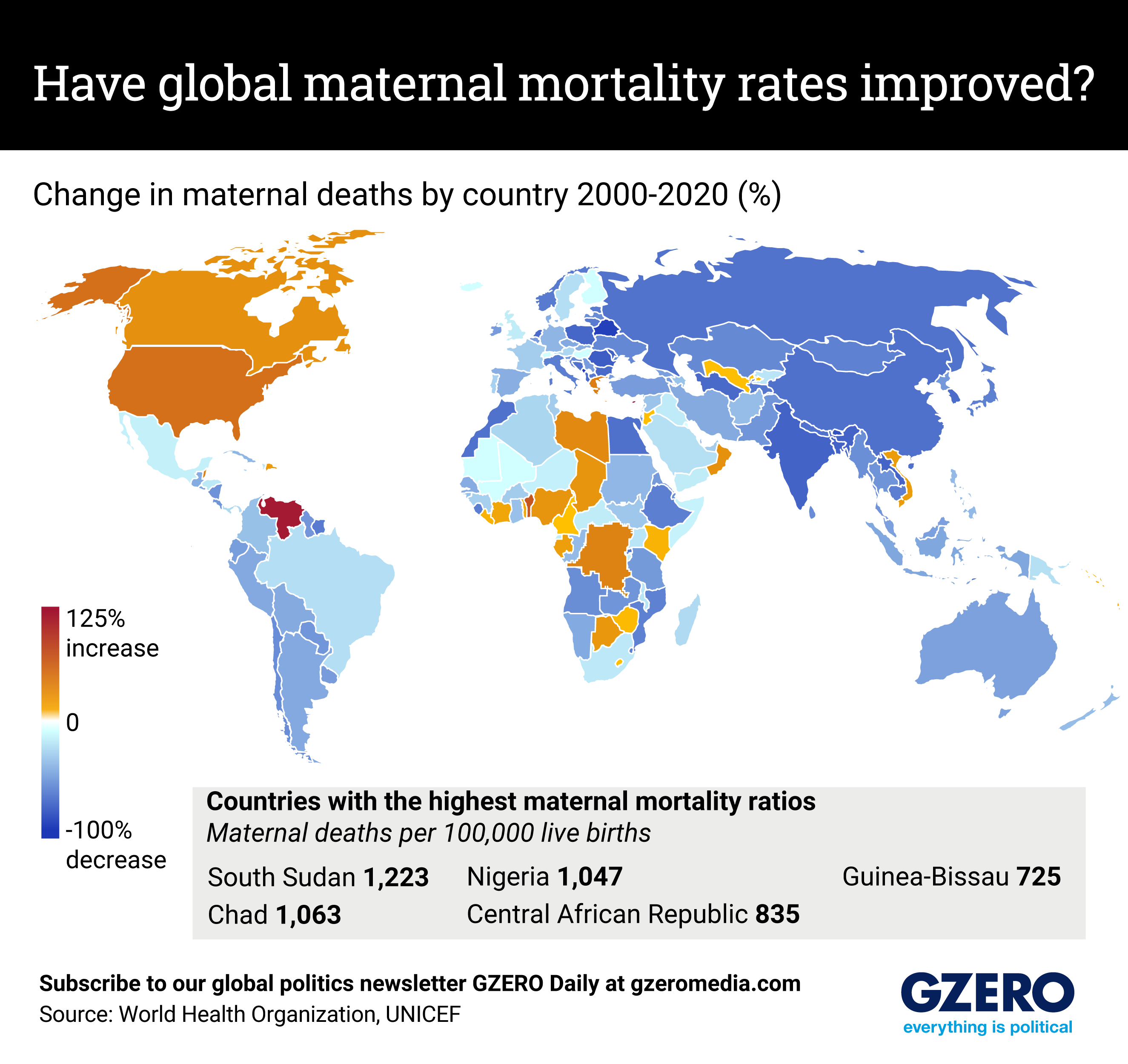Maternal mortality – deaths that occur during pregnancy or childbirth – remains one of the most startling health indicators separating women in wealthy states from those in the developing world. While the global maternal mortality rate dropped by 34% in the two decades leading up to 2020, pregnancy and childbirth are still often deadly experiences for women, particularly in Africa, where they often lack access to pre and postpartum care. Throughout much of the West, meanwhile, rates of maternal mortality increased from 2016-2020. We take a look at the change in maternal mortality rates since 2000.
More For You
Here we go again: Israel’s Knesset is once more considering a bill that would force certain ultra-Orthodox Jewish men, who are part of the Haredi sect, to serve in the military – just like the rest of the country.
Most Popular
What’s Good Wednesdays™, December 3, 2025
Walmart's $350 billion commitment to American jobs
Even though an energy corruption scandal is roiling his leadership, Ukrainian President Volodymyr Zelensky isn’t necessarily in a rush to accept a deal to end the Russia-Ukraine war – especially if the terms are unfavorable.
Ian Bremmer breaks down President Trump’s ultimatum to Venezuelan leader Nicolás Maduro, “leave with your family or be removed,” and why US military action now appears imminent.
